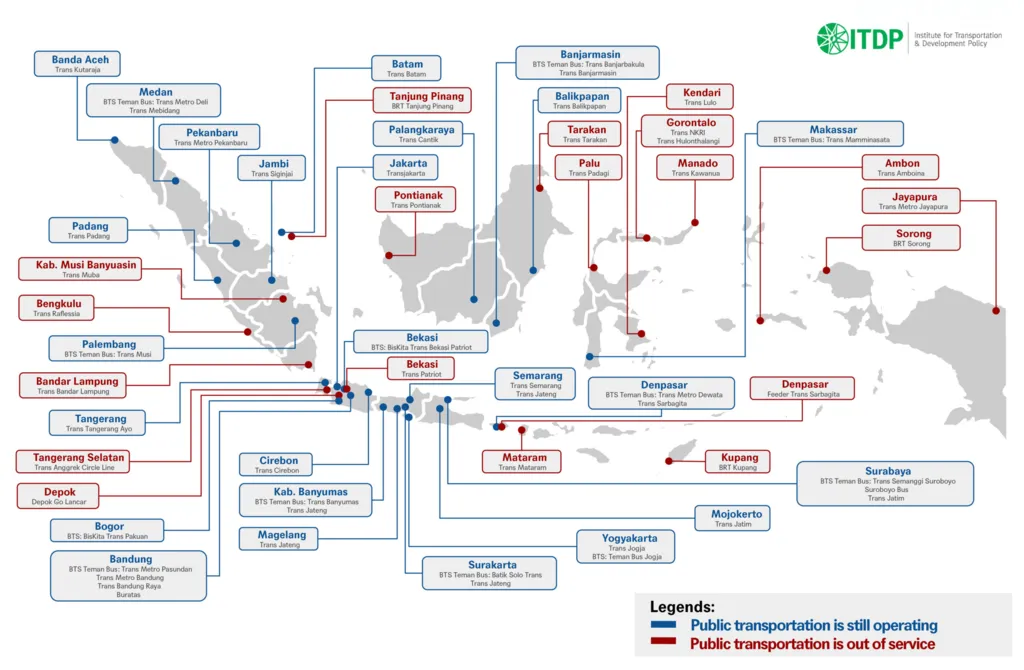Indonesia is making bold moves to modernize urban mobility through large-scale investments and smart planning. These efforts are a part of broader Indonesia Urban Transit Projects that are rapidly evolving the country’s urban transit systems.
A standout example is MRT Jakarta, the country's first subway line. Since its launch, congestion along its corridor has dropped by 34%, according to research by Monash University Indonesia. This is just one piece of a broader push under the National Medium-Term Development Plan (RPJMN) 2020–2024, which identifies mass transit as a national strategic priority. Let's dive deeper!
Read Also: Indonesia Urban Mobility Disruption Sparks Progress
Indonesia Urban Transit Projects: Massive Government Investment in Public Transit
At the heart of Indonesia's transit push is the $224 million MASTRAN (Indonesia Mass Transit) Project, which began in 2022. With support from international partners, this initiative focuses on developing Bus Rapid Transit (BRT) systems in key metropolitan areas, including Medan and Bandung.

Feasibility studies are already yielding results. Cities like Bandung, Pekanbaru, and Semarang are building BRT corridors with dedicated lanes and wider service coverage, aiming to make public transit faster and more reliable.
Meanwhile, the public transportation market is projected to reach US$1.96 billion in revenue by 2025, highlighting both rising demand and commercial potential.
Electrification and Technology Lead the Way
Indonesia is also embracing cleaner transit options. Transjakarta, the capital’s bus operator, plans to shift from 2% electric buses in 2022 to 100% by 2030, with a goal of more than 10,000 e-buses in operation. This electrification effort supports the national climate agenda and helps lower emissions in some of Southeast Asia’s busiest cities.
In parallel, digital innovations are enhancing the user experience. Mobile ticketing apps, online payment systems, and route optimization tools are making public transport more accessible and efficient. These upgrades are not only convenient but are also encouraging more people to leave their cars at home.
Read Also: Big Changes Ahead Indonesia Infrastructure Development
Economic and Social Benefits of Indonesia Urban Transit Projects
Urban areas account for nearly 60% of Indonesia’s GDP. Improving transit in these areas isn’t just about getting people from point A to B—it’s a matter of national economic strength.
Better mobility reduces wasted time in traffic, supports commerce, and attracts investment. Additionally, by shifting commuters from cars to buses and trains, the government can cut greenhouse gas emissions, easing the burden on the environment.
Projects like MASTRAN are also improving safety, travel time, and inclusivity. There's a growing effort to ensure that more women are employed in transit operations, creating a more diverse and community-focused transport sector.
Indonesia Urban Transit Projects: A More Connected Urban Future
Indonesia urban transit projects are reshaping the nation’s cities. With strong government leadership, rising investment, and a clear focus on technology and sustainability, Indonesia is creating a smarter, greener, and more inclusive future for urban mobility. Whether it's slashing congestion, powering buses with electricity, or enhancing safety and equity, these transit projects are setting new standards and giving millions of Indonesians a better way to move.







